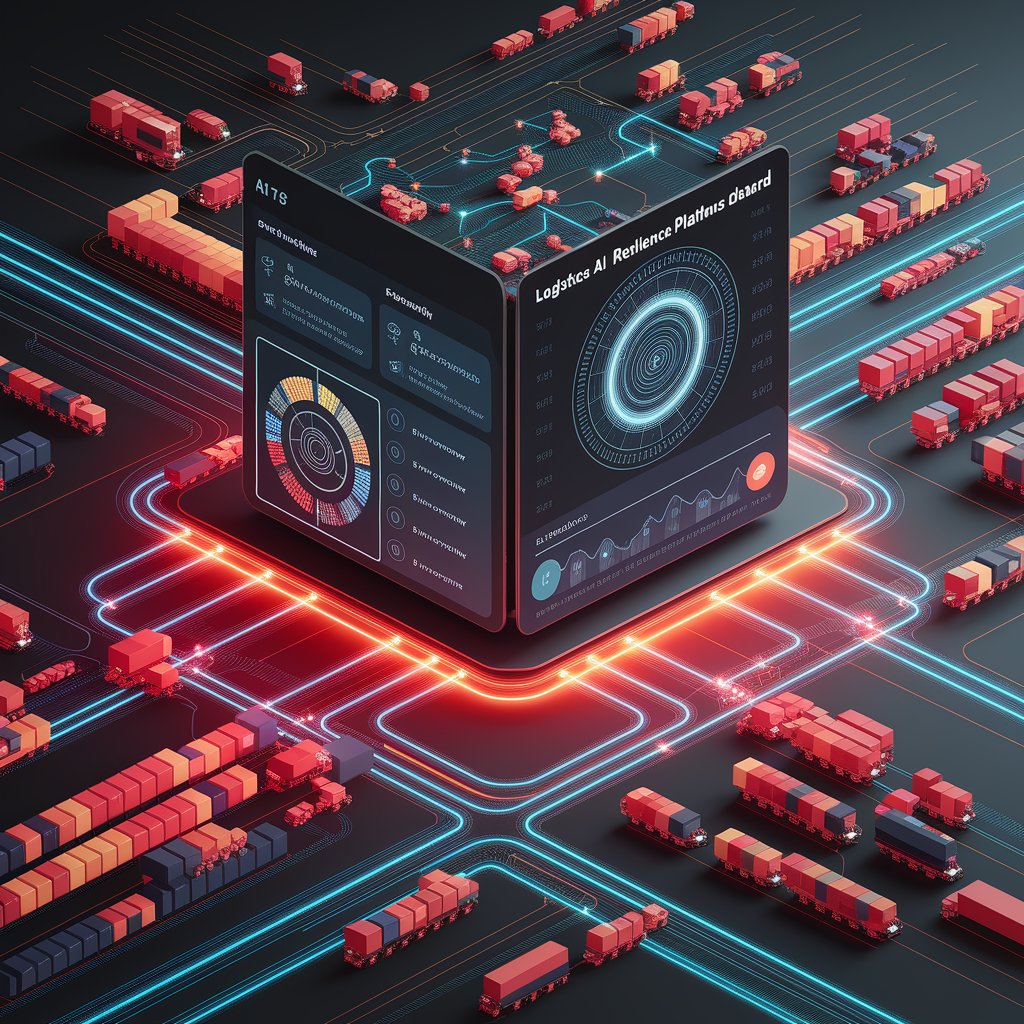Logistics AI Resilience Platforms: Building Stronger, Smarter Supply Chains

Introduction
That’s why many are adopting logistics AI resilience platforms. These platforms use artificial intelligence to monitor risks, simulate disruptions, and provide proactive strategies, transforming fragile supply chains into adaptive, intelligent networks.
What Are Logistics AI Resilience Platforms?
Logistics AI resilience platforms are digital solutions powered by artificial intelligence that focus on building adaptability and recovery capacity into supply chains. Instead of simply reacting to problems, they anticipate and mitigate risks before they escalate.
These platforms combine real-time monitoring, predictive modeling, and automation to deliver stronger supply chain resilience across every layer—from transportation to warehousing and last-mile delivery.

Key Features of Logistics AI Resilience Platforms
- Risk Monitoring & Alerts – AI scans global events (weather, strikes, political changes) that could impact logistics.
- Disruption Simulation – “What-if” scenarios test supply chain vulnerability.
- Predictive Analytics – Anticipates demand and supply fluctuations.
- Dynamic Rerouting – Suggests alternative routes in real time.
- Supplier & Partner Risk Scoring – Evaluates reliability and performance.
- Integrated Dashboards – Centralized view of resilience KPIs across the network.
Benefits of Logistics AI Resilience Platforms 📈
- Stronger Risk Management – Proactively identify and mitigate threats.
- Reduced Costs – Minimize penalties, demurrage, and emergency shipping.
- Improved Continuity – Keep operations running even during disruptions.
- Agility – Rapidly adapt to market or environmental changes.
- Customer Trust – Deliver on promises despite unexpected challenges.
- Sustainability – Reduce waste by optimizing resource allocation.

Real-World Applications
- Freight Forwarders – Offer clients predictive resilience insights as a service.
- Carriers – Reroute fleets instantly during congestion or extreme weather.
- E-commerce Logistics – Maintain delivery reliability during peak demand surges.
- Pharma & Cold Chain – Protect temperature-sensitive cargo with predictive safeguards.
- Global Shippers – Reduce risk exposure from single-region dependencies.
Challenges in Logistics AI Resilience Platforms
- Data Fragmentation – Incomplete datasets reduce prediction accuracy.
- Integration Barriers – Connecting legacy ERP, TMS, and WMS systems is complex.
- High Initial Costs – AI resilience tools require significant investment.
- Cybersecurity Concerns – Sensitive global supply chain data must be protected.
- Change Resistance – Some teams may prefer reactive rather than proactive approaches.

Best Practices for Success
- Start with Critical Routes & Products – Apply resilience tools where risk is highest.
- Unify Data Sources – Ensure ERP, WMS, TMS, and IoT inputs are integrated.
- Leverage Scenario Simulations – Test different disruption models regularly.
- Combine AI with Human Expertise – Use planners to validate AI-driven recommendations.
- Train Teams & Partners – Build trust in AI-driven resilience strategies.
- Measure ROI in Risk Reduction – Track avoided costs and improved service continuity.
The Future of Logistics AI Resilience Platforms 🚀
- Autonomous Risk Management – AI platforms automatically adjust operations in real time.
- Blockchain Integration – Secure, transparent data sharing across global partners.
- Digital Twins of Supply Chains – Simulate disruptions instantly with virtual models.
- Collaborative Resilience Networks – Shared intelligence across carriers, shippers, and regulators.
- Sustainability-Focused Resilience – Balance financial protection with environmental goals.
Conclusion
Logistics AI resilience platforms are transforming supply chains from fragile to adaptive. By predicting risks, running disruption simulations, and enabling dynamic rerouting, these platforms help companies stay agile, reduce costs, and protect customer trust.
For freight forwarders, carriers, and global shippers, investing isn’t just about managing risks—it’s about building the intelligent, future-ready supply chains needed to thrive in a volatile world.
